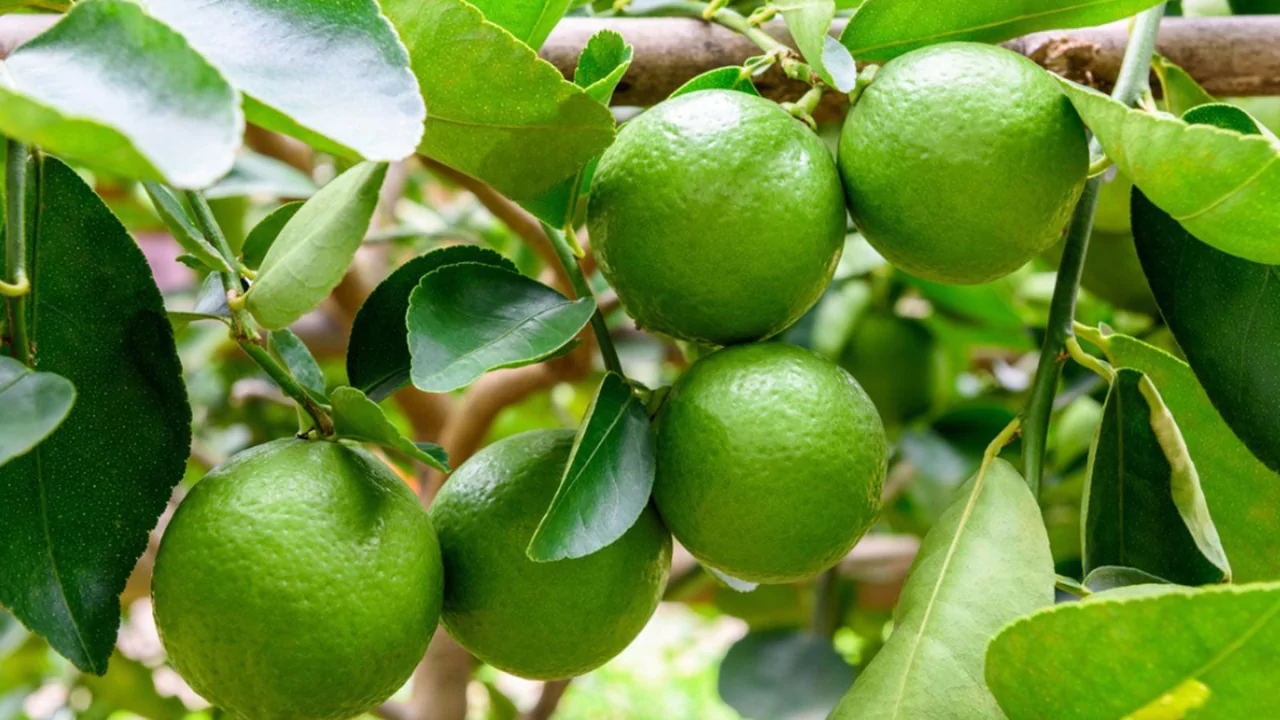
Of all the types of citrus trees, lime trees are the most sensitive to cold and can only be grown outdoors in warm and mild regions. Fortunately, you don’t have to live below zone 9 to grow lime trees indoors. As long as you have a southern-exposed window, you can keep lime trees regardless of how snow builds up outside.
Beyond looking beautiful, lime trees can be rewarding if you can successfully harvest any limes. Depending on whether you purchased a large tree or started with a smaller sapling, most lime trees take between 3 to 4 years to blossom. In addition, they require sunlight, moisture, and well-drained soil to thrive.
For best results, it’s recommended to keep trees outside for summer. Once the fruits set, limes will require several months to mature on the tree. While they won’t ripen off the tree, limes can be picked when they are sweet enough.
Planting and Caring for Lime Trees
The initial step in cultivating lime trees starts with tree selection. For indoor growing purposes, a dwarf variety is preferable. These dwarf trees are less than 10 feet tall because they are grafted onto a dwarf stock root.
Some of these trees may attain a height of 8 feet. Purchase lime trees from a guaranteed nursery as such adolescents are offered by reputable vendors. Lime trees may suffer from root disease infections contracted during their time at the nursery. It is vital to have clean, healthy stock right from the start.
Ensure that the lime tree is placed in a plastic, clay, or ceramic pot that’s bigger than the root ball by a few inches. Such pots must have adequate drainage holes. Consider summer outdoor relocations of the tree when buying the pot – ensure that the pot has coasters for easy wheeling.
Light, loamy potting soil, which is at least somewhat sandy, partially fills the pot. When possible, use potting soil designed specifically for citrus trees. She gently sets the rootball in the pot and finishes filling it with soil. The moist soil is tamped down lightly. Watering is done until the soil feels moist to the touch.
Put the lime tree in a window with direct sunlight for 6 to 8 hours. Supplement tailored grow lights for windows in the winter, especially if leaves drop or turn pale green, as not all windows receive sunlight in winter.
These trees prefer a temperature range of 55 to 85 degrees Fahrenheit, with 65 F being ideal. Lime trees can be harmed by sudden changes in temperature from heaters, radiators, or exterior doors.
As long as the outdoor temperature is favorable with no risk of frost, you can place the lime tree outside during the summer. Outdoors, a patio or terrace will work great, as long as the tree can be kept in a protected area with bright shaded light. Follow the same routine in the fall: reverse the process – move the tree inside slowly. To avoid shock, the transition period requires gradual adjustments..
Giving the lime tree moderate water will keep the soil consistently damp, which is ideal. In cases where the soil is too rich, carbonate lime rot may develop, so it is wise to allow the soil to dry.
Since lime trees benefit from muggy environments, placing a humidifier near the tree or spraying its leaves with water will help. This tip is important for winter, when the atmosphere becomes too dry.
Fertilize lime trees every three weeks in spring and summer with either a citrus fertilizer or one designed for tomatoes and vegetables. Use 2 tablespoons per tree or follow the recommended dosage on the package.
During fall and winter, fertilization should take place every six weeks. Lime trees are prone to micronutrient deficiencies, particularly iron and magnesium. A micronutrient fertilizer should be applied in spring.
Lime trees do not require much pruning compared to orchard fruits. However, you may prune to control the tree’s size, remove dead wood, or to eliminate branches that rub against each other.
Lime Potential Pests and Problems
Moisture related problems, such as root rot and fungal diseases, are some of the most common diseases. Avoid overwatering and ensure well-drained soil to mitigate these issues. Lime trees are afflicted by aphids, leaf hoppers, mites, and scale.
To help rid the tree of insects, spray it with warm soapy water three days before bringing it inside for the winter. If faced with insect pests, use insecticidal oil or soap.
Lime Varieties Worth Trying
Purchase a variety that is small in size and disease resistant to ensure versatility.
- ‘Persian’ limes (or ‘Bearss’ as some call it) is a cultivar best loved for its ease of cultivation and disease resistance. It is a dwarf lime variety.
- ‘Eustis’ limequats stem from a cross of a lime with a kumquat. As a result, these fruits are more tolerant to cold compared to limes, and also share their flavor profile.